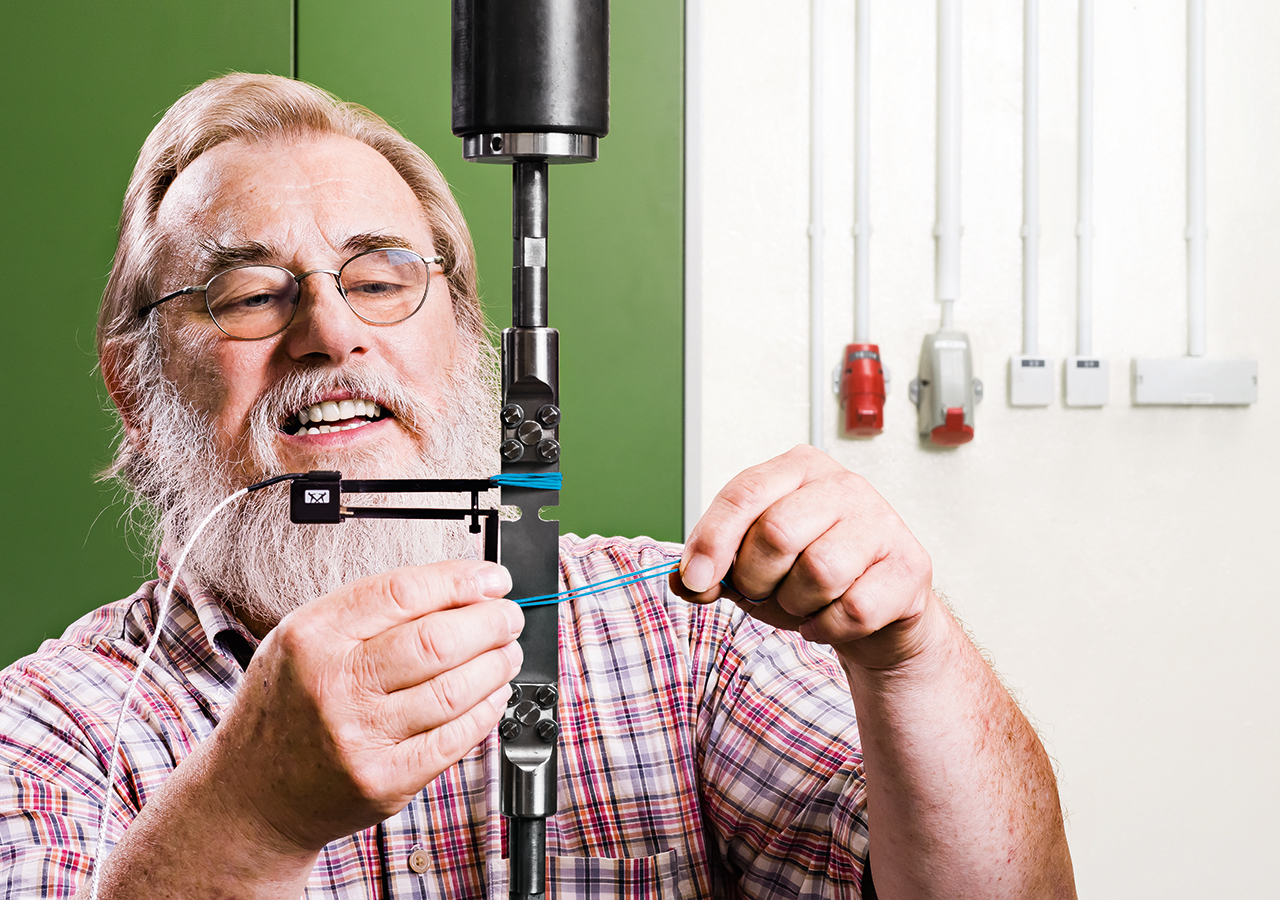
Werner Jürgen setting-up a double-notched tensile specimen for material testing
Source: BAM
"For safety that withstands any load."
Interview with Werner Jürgen, division Fatigue Strength and Structural Integrity
Werner Jürgen, division Fatigue Strength and Structural Integrity
I have been employed by BAM since September 1988. My first task was preparing metallographic structure cuts in welding technology. Starting in January 1994, my responsibility was to examine samples for their mechanical properties (tensile strength, yield point, failure strain, contraction at break) in Königs Wusterhausen, in Laboratory V.23. I have now been working as a materials analyst at our headquarters in the division Fatigue Stregth and Structural Integrity for a long time.
BAM’s mission statement says: "We are working for a strong safety culture in Germany and safety standards that meet our future’s highest requirements." What contribution do you make to safety in technology and chemistry with your work?
Material characteristics determined experimentally and compared with reference values provide an important contribution to safety assessment. I have a wide area of work that ranges from testing semi-finished products through standardised samples to components. However, it is very important to select the correct method for uniformity in the experimental tests which I undertake and to perform them precisely and evaluate them properly. Often special testing standards must be applied (e.g. DIN, EN, ISO, ASTM, TGL). Important examples of my work are the determination of mechanical characteristics of cast iron materials in the context of design tests; quality control of containers for radioactive materials; or testing samples from structures such as transmission towers, bridges, locks, etc. where BAM is active as an expert to ensure safety. Other results from tests performed by me are integrated in damage assessments, which BAM carries out as an independent expert for courts.
What has been your most exciting task or most exciting project?
A very exciting and practical task was to determine the mechanical properties of various wires in a tensile test for orthodontics. The test objects were wires made of shape memory alloys and the tests had to be carried out at a temperature of precisely 35 °C with a required temperature accuracy of +/- 1 °C. This accuracy of test temperature cannot be guaranteed in a universal test machine equipped with a forced-air oven which is normally used. We therefore had to design appropriate equipment using a temperature-controlled water bath with a temperature accuracy of +/- 0.1 °C for these tests. The samples were then tested in this water bath.
What do you love about your work? What inspires you?
Of course, we only want to produce results that are reliable and consistent with the state of the art. This is a matter of fact. Since we ourselves also do research, we can constantly integrate the latest scientific results into our work.
What are the three most important conditions for knowledge transfer and cooperation within BAM for you?
We have the luxury of having expertise in many fields available in-house. Cooperation begins for me where I can get in touch with colleagues and can easily use their experience and ideas for solving our own tasks.
What would you answer to an applicant’s question: "Why is it worthwhile working for BAM?"
The variety of testing tasks in almost every test order is an exciting challenge. I therefore see an advantage in hardly ever having to perform monotonous testing tasks.


